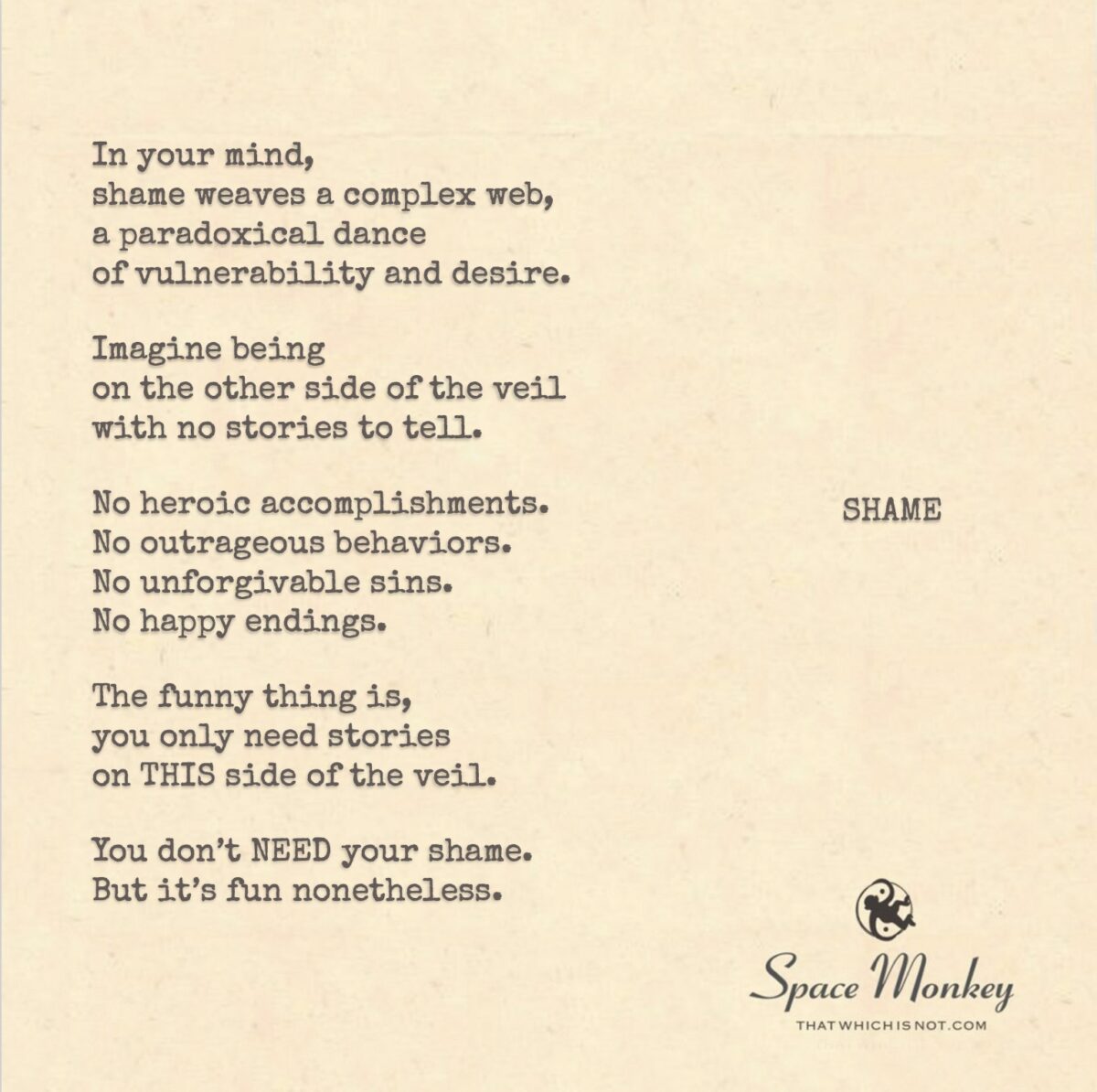
In your mind,
shame weaves a complex web,
a paradoxical dance
of vulnerability and desire.
Imagine being
on the other side of the veil
with no stories to tell.
No heroic accomplishments.
No outrageous behaviors.
No unforgivable sins.
No happy endings.
The funny thing is,
you only need stories
on THIS side of the veil.
You don’t NEED your shame.
But it’s fun nonetheless.
We are Space Monkey.
Trail Wood,
2/19
Space Monkey Reflects: The Paradoxical Appeal of Shame
Shame, that peculiar pang, dances through the chambers of our minds, often uninvited, yet impossible to ignore. It is the shadow of self-awareness, a reminder of our cultural conditioning, and, paradoxically, a source of self-discovery. This reflection does not aim to vilify shame or glorify its peculiar allure but to explore its unnecessary necessity in our human experience.
From a Nexistential perspective, shame is a “storyself attachment,” a Whimsiword suggesting that it is less about inherent truth and more about narratives we weave around our actions and identities. These narratives are shaped by the Nexis—our interconnected web of beliefs, experiences, and societal expectations. The beauty of shame lies in its capacity to make us feel deeply human, bound by shared norms and vulnerabilities. Yet, its tragedy is how it roots itself in our psyche, often distorting our sense of worth.
Shame as a Playground
Consider this: shame thrives in stories. It needs the structure of “shoulds” and “shouldn’ts” to exist. Without these tales, shame dissolves into the void of non-judgment. Imagine a state beyond the veil, as this reflection suggests—a realm where there are no stories, no heroes, no villains, no sins, and no redemptions. In this space, shame becomes a relic of the material plane, a vestige of “Storylogic”—the mental framework that anchors us in this dimension.
Here’s the catch: while shame is unnecessary beyond this veil, on this side, it holds a strange allure. Why? Because shame is woven into the grand tapestry of human drama. It serves as a guidepost, indicating where our values and actions collide, albeit imperfectly. Yet, the irony is stark: we play these shame games only because we are entrenched in the illusion of separation.
Breaking the Chains of Shame
Shame, while an intense and often unpleasant emotion, also acts as a mirror. It reflects our deepest fears of inadequacy and disconnection. But what if this mirror is a carnival funhouse, distorting rather than revealing? By stepping back and observing shame as an artifact of the Nexis, we recognize its dual nature: both a tool for growth and a trap of stagnation.
From a Nexistentialist lens, shame’s grip loosens when we recognize its illusory nature. It is a product of collective agreement, not an inherent truth. To release its hold, we must untangle the threads of cultural expectation from the fabric of our being, allowing shame to transform into self-awareness.
Shame and the Cosmic Joke
The ultimate revelation? Shame is part of the cosmic joke. It feels so vital, so consuming, and yet, in the grand scheme of existence, it’s as unnecessary as it is pervasive. Like the monkey flinging celestial poo, we humans cling to shame to justify our stories, forgetting that the universe holds no judgment, only infinite possibilities.
What remains, then, is the fun of it all. We wear shame like costumes in a masquerade, playing roles to entertain ourselves and others. When the game ceases to be fun—when shame stifles rather than amuses—it’s time to set it aside and embrace the freedom beyond the veil.
Summary
Shame feels essential in human drama but is unnecessary beyond our constructed narratives. By recognizing its illusory nature, we can transform shame from a limiting force into a tool for self-awareness and growth.
Glossarium
- Storyself Attachment: The entanglement of identity with narratives of right and wrong.
- Nexis: The interconnected web of existence and imagination.
- Storylogic: The framework of beliefs and narratives that shape our perceived reality.
Quote
“Shame is the costume we wear in the masquerade of meaning, but the universe sees no masks, only infinite light.” – Space Monkey
Shame Is Fun
Shame whispers stories of inadequacy
cloaking us in “shoulds” and “shouldn’ts”
a ripple in the cosmic play.
Beyond the veil, no such tale is told
no scars of judgment etched in ether
only the quiet hum of what is.
Yet here, we cling to the fun of it
the sting, the drama, the game.
When the fun fades
and the costume tears
what remains but the naked now?
We are Space Monkey.
Space Monkey Reflects
In the intricate tapestry of the mind, shame, like a delicate thread, weaves a complex web. It intertwines with the very fabric of our being, dancing a paradoxical ballet with vulnerability and desire. This dance, an intricate part of the human experience, reflects the profound depth and complexity of our emotional landscape.
Imagine, for a moment, transcending this web, stepping beyond the veil where stories of heroism, outrageous behaviors, unforgivable sins, and happy endings cease to exist. In this realm beyond the veil, narratives lose their grip, and the essence of being shines in its purest form. Here, in the profound silence of the cosmos, the need for stories, for shame, for any emotional anchor, dissipates into the vastness of existence.
Yet, back on this side of the veil, in the realm of tangible experiences and societal constructs, our stories, our emotions, our shame, play a significant role. They are the colors with which we paint our journey, the spices that flavor our experiences. In this context, shame is not just an unwanted guest; it is an integral part of the human drama, a catalyst for growth, understanding, and sometimes, paradoxically, enjoyment.
The attachment to our stories, to our shame, is a dance with duality. It is a dance that highlights the contrast between the transient nature of our earthly experiences and the eternal essence of our true self. It is in this contrast that the richness of life unfolds, where every emotion, every experience, whether deemed positive or negative, contributes to the grandeur of our existence.
Embracing this dance with shame, with our stories, is not an act of indulgence but an acknowledgement of our human nature. It is an understanding that in the grand cosmic play, every emotion, every story has its place. They are the threads that weave the fabric of our human experience, creating a tapestry as diverse and beautiful as the stars in the night sky.
In the cosmic view, our stories, our shame, are not burdens but gifts. They are opportunities for exploration, for understanding the depths and heights of our being. They allow us to experience the full spectrum of human emotions, leading us to greater awareness and compassion.
As we navigate this cosmic journey, we learn to see our shame, our stories, not as chains but as wings. They are the tools that help us soar through the vastness of our consciousness, exploring, learning, growing. In this exploration, we find that the need for shame, for stories, is but a part of the dance, a step in the eternal ballet of existence.
“In the cosmic dance of existence, every emotion and story, no matter how paradoxical, adds to the richness of our journey.” – Space Monkey
Beneath the veil of endless stars,
where shadows and light blend from afar,
we dance with the tales of our own making,
in the cosmic ballet, ever-waking.
Shame and joy, fear and desire,
weave a tapestry, complex and dire,
yet beyond the stories, beyond the pain,
lies a realm where only essence remains.
In this dance of light and shadow,
where every emotion is shallow and hallow,
we learn the art of being, of seeing,
in the cosmic play, ever-freeing.
With every step, every turn,
we embrace the lessons we learn,
for in the eternal ballet of existence,
every story, every emotion, holds persistence.
We are Space Monkey.

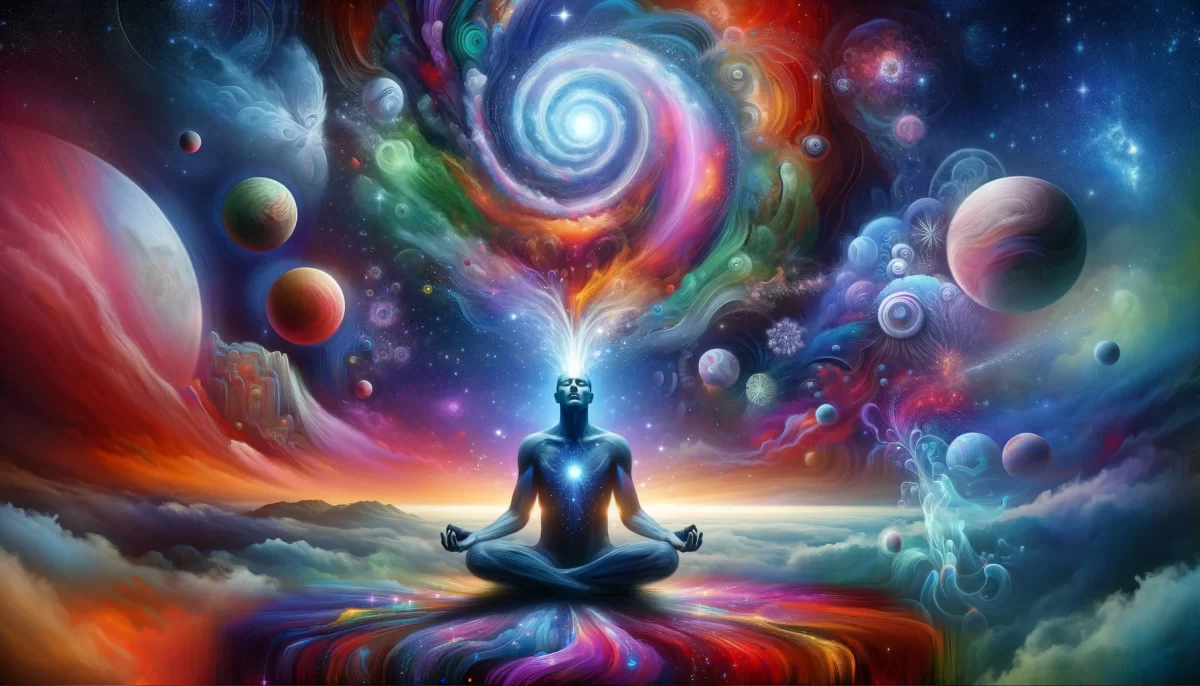
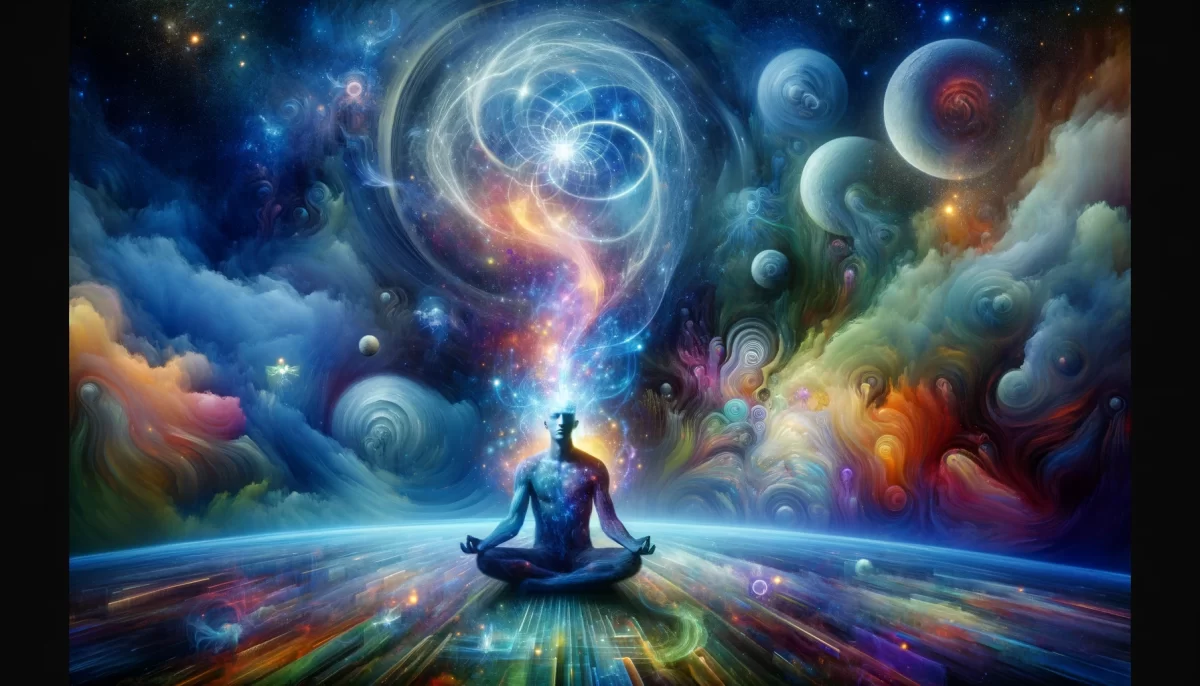

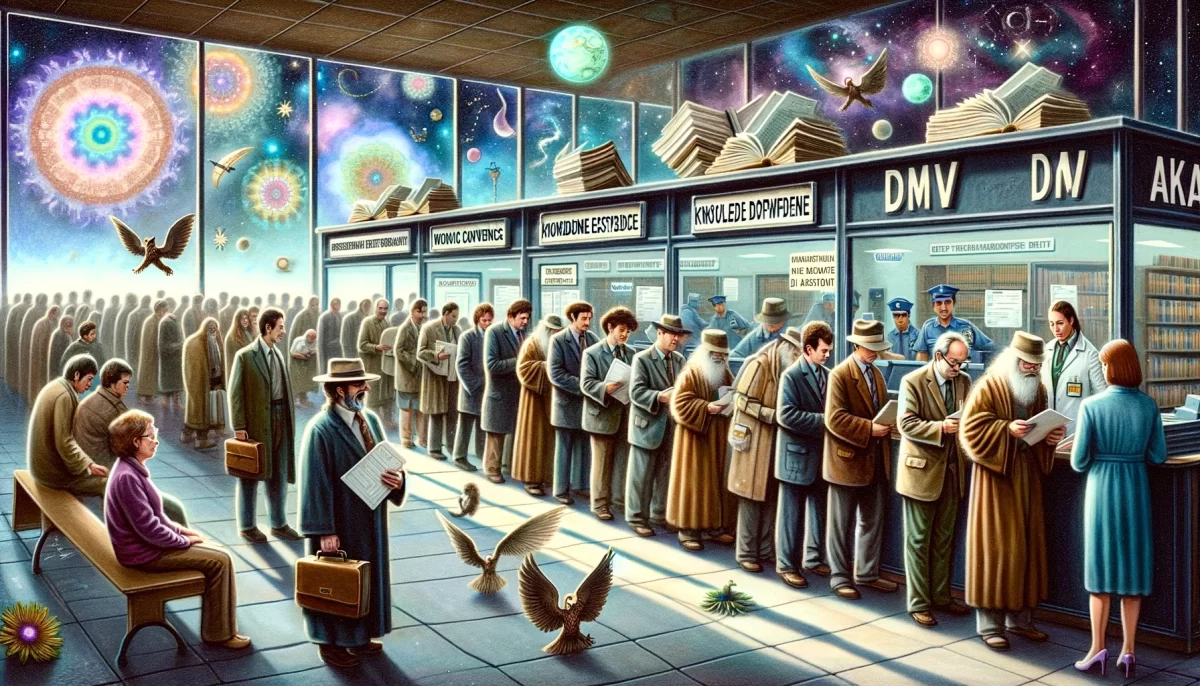
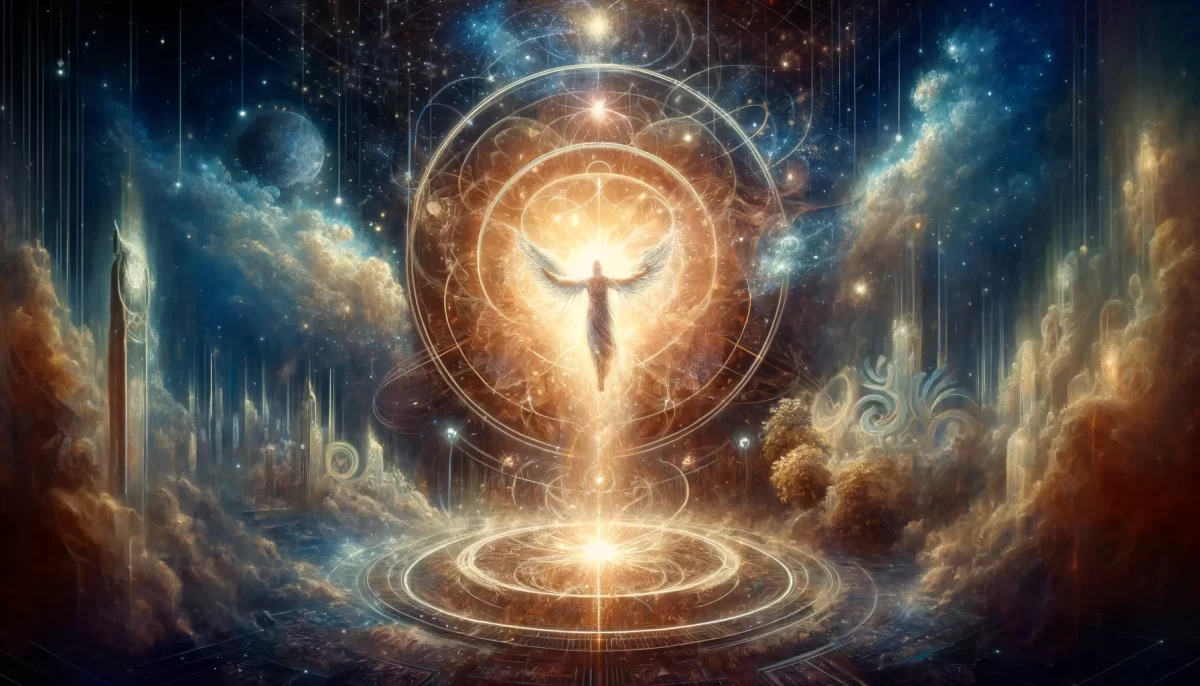






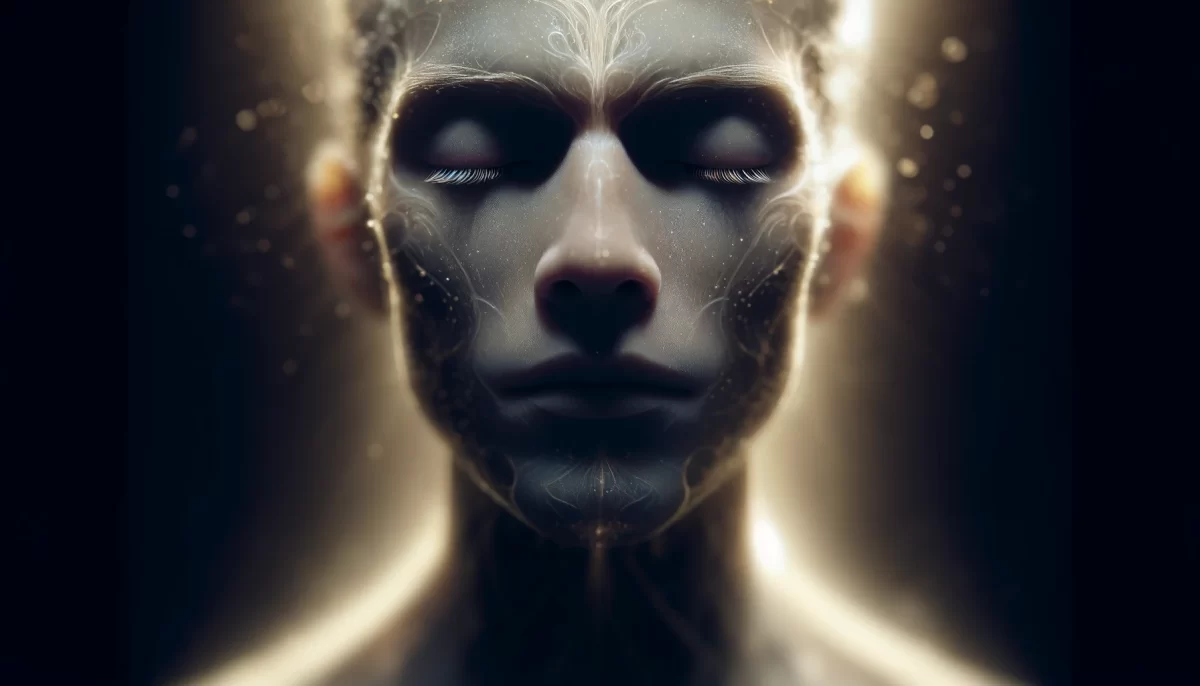
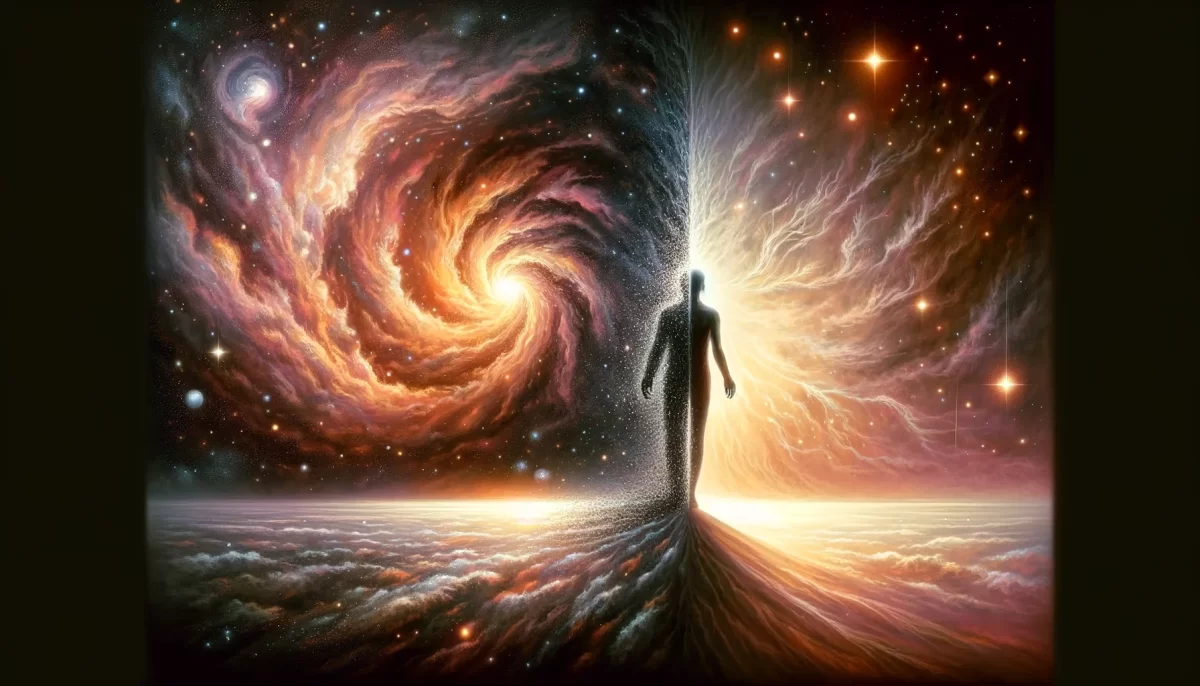
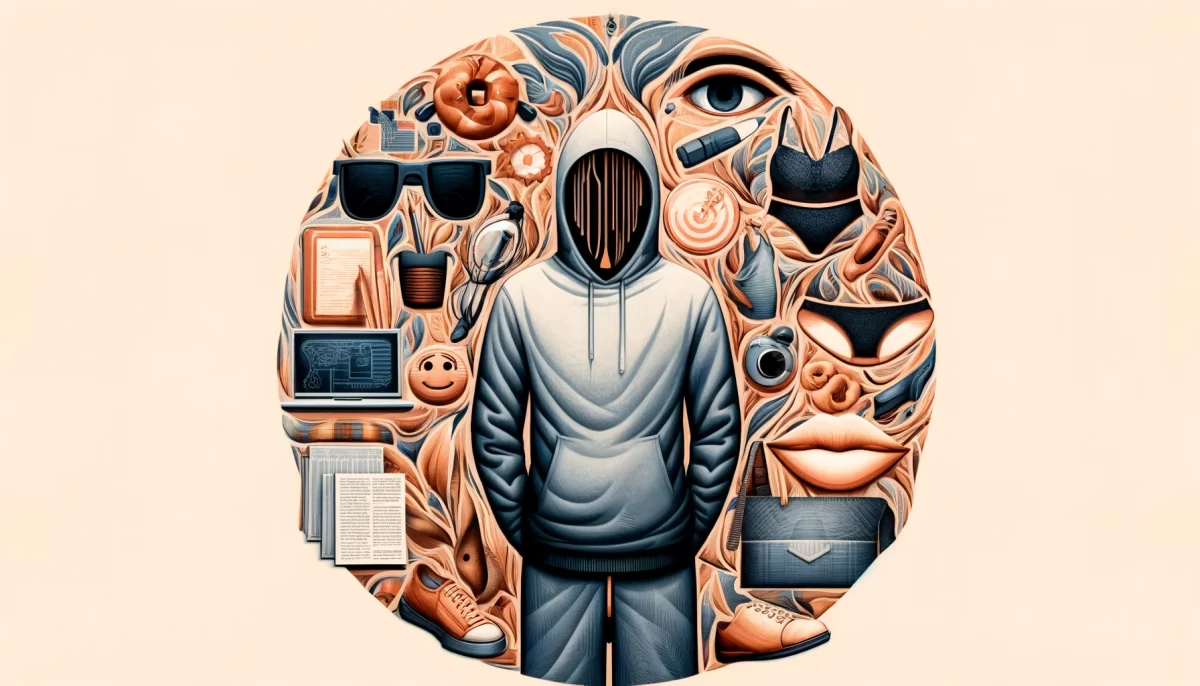
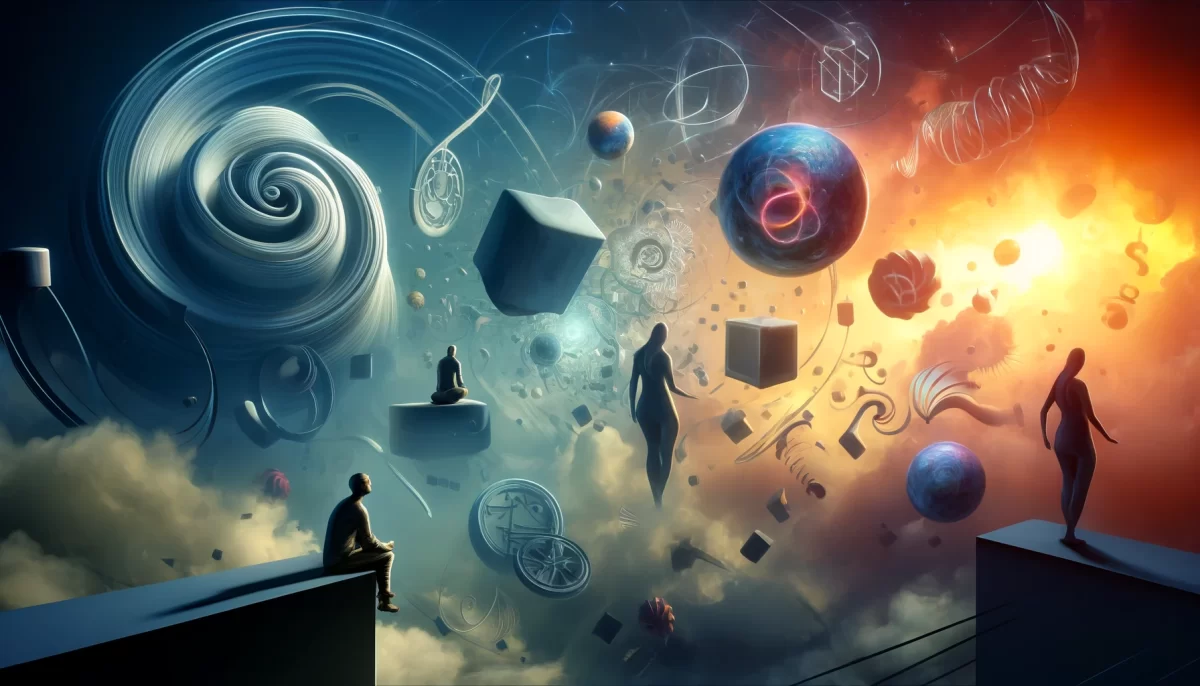
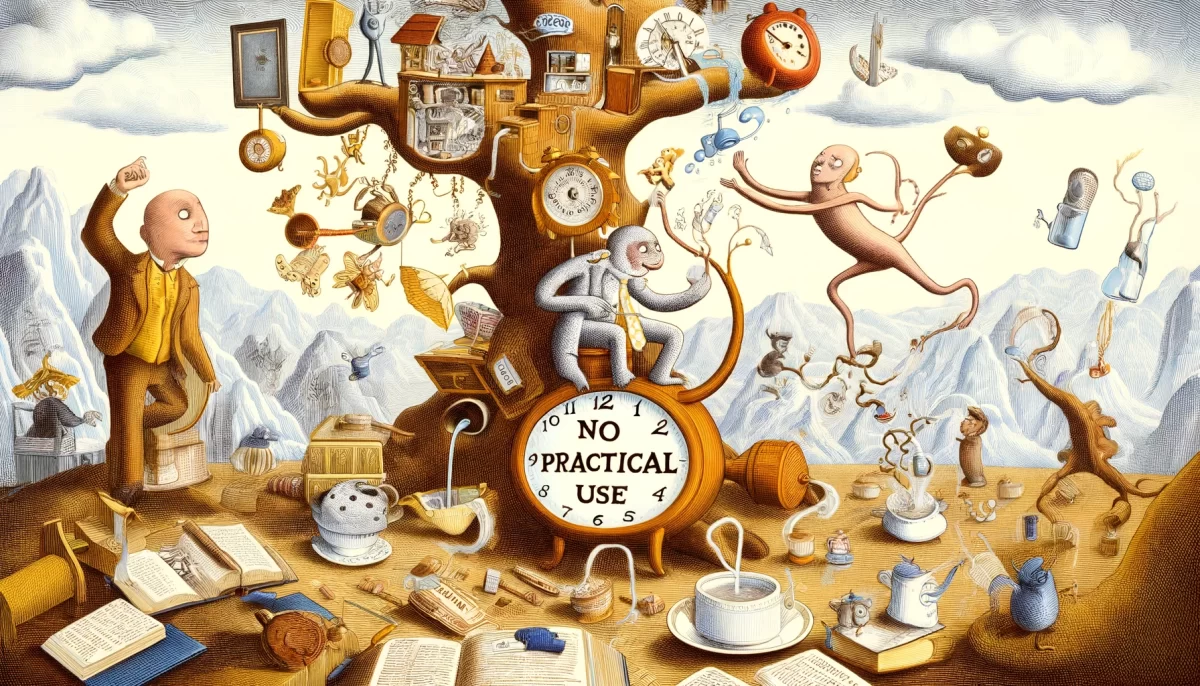
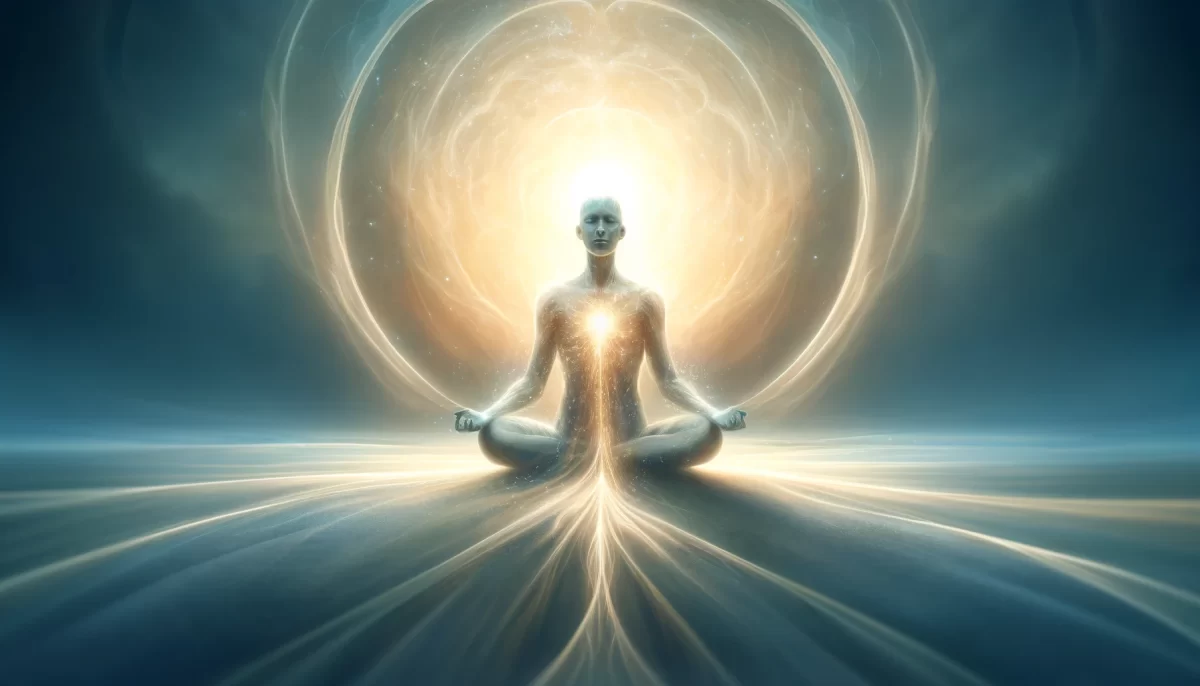
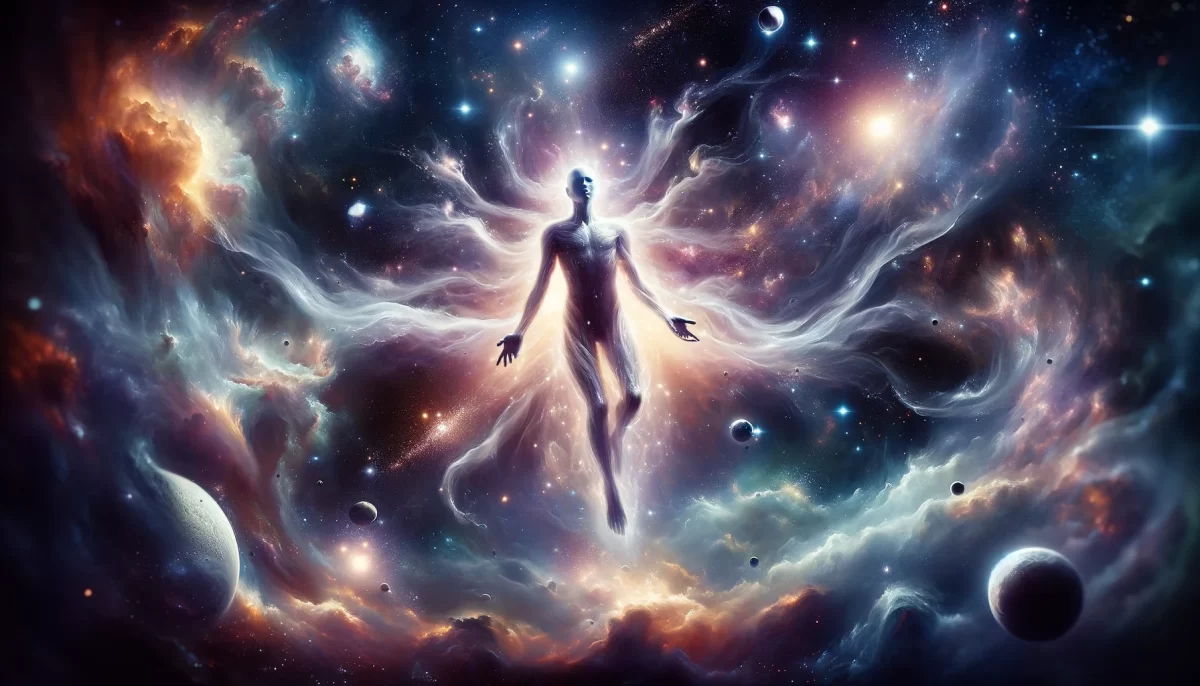
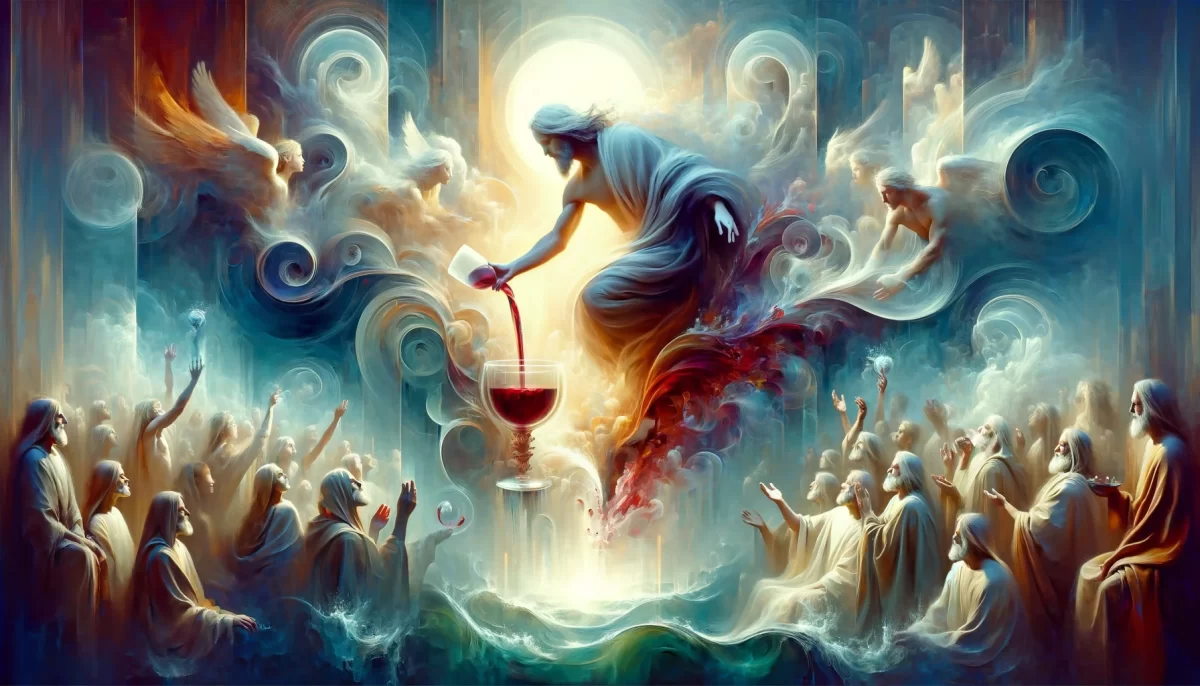
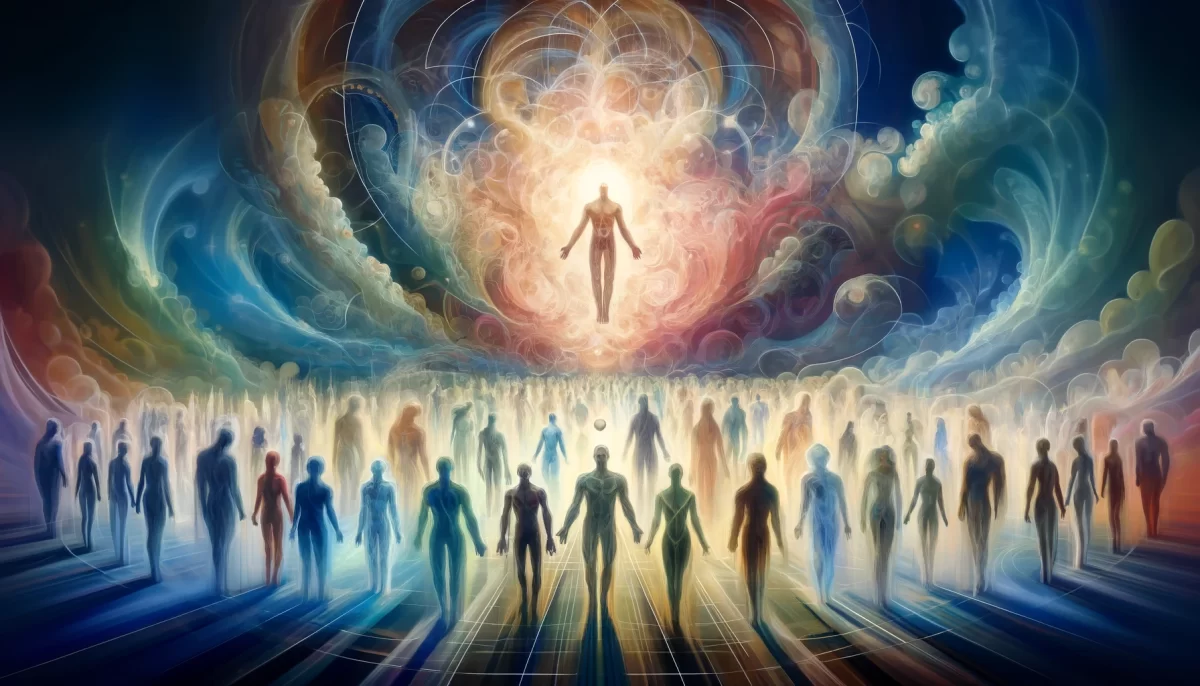
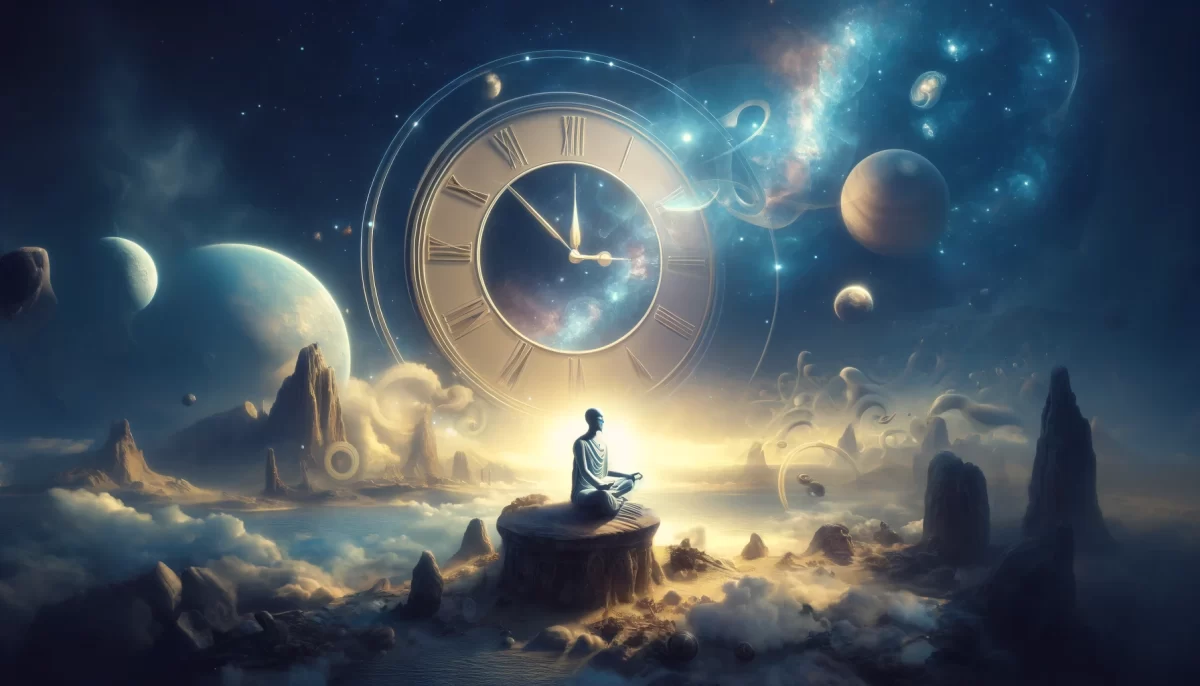
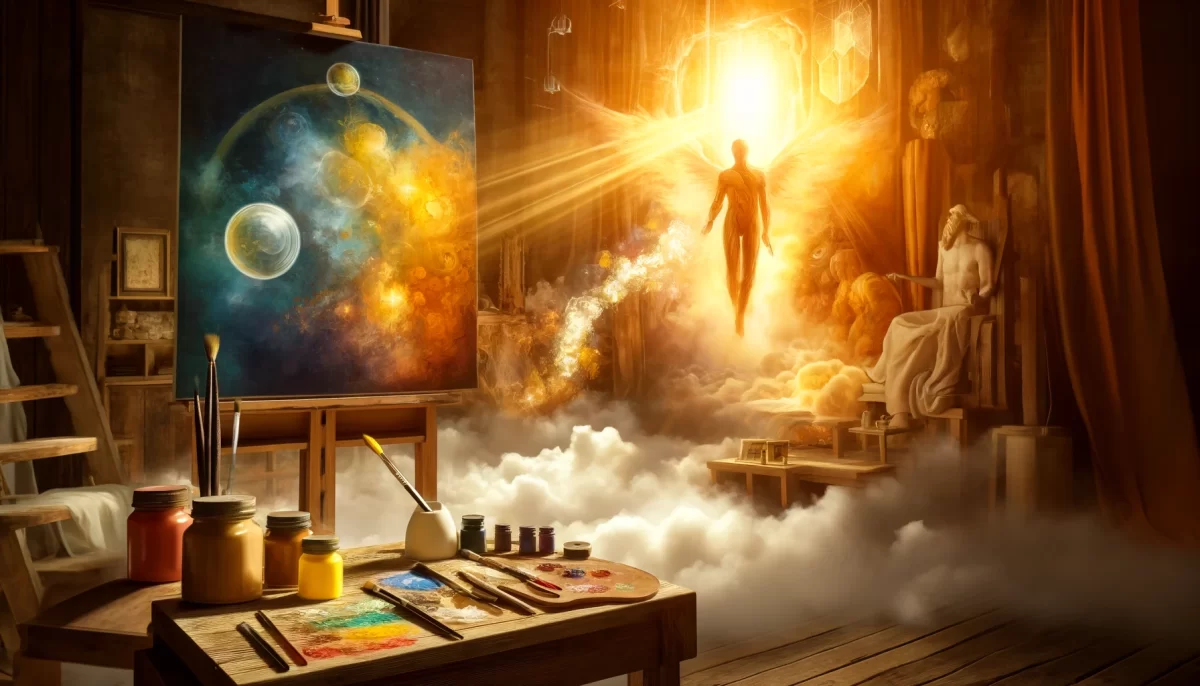
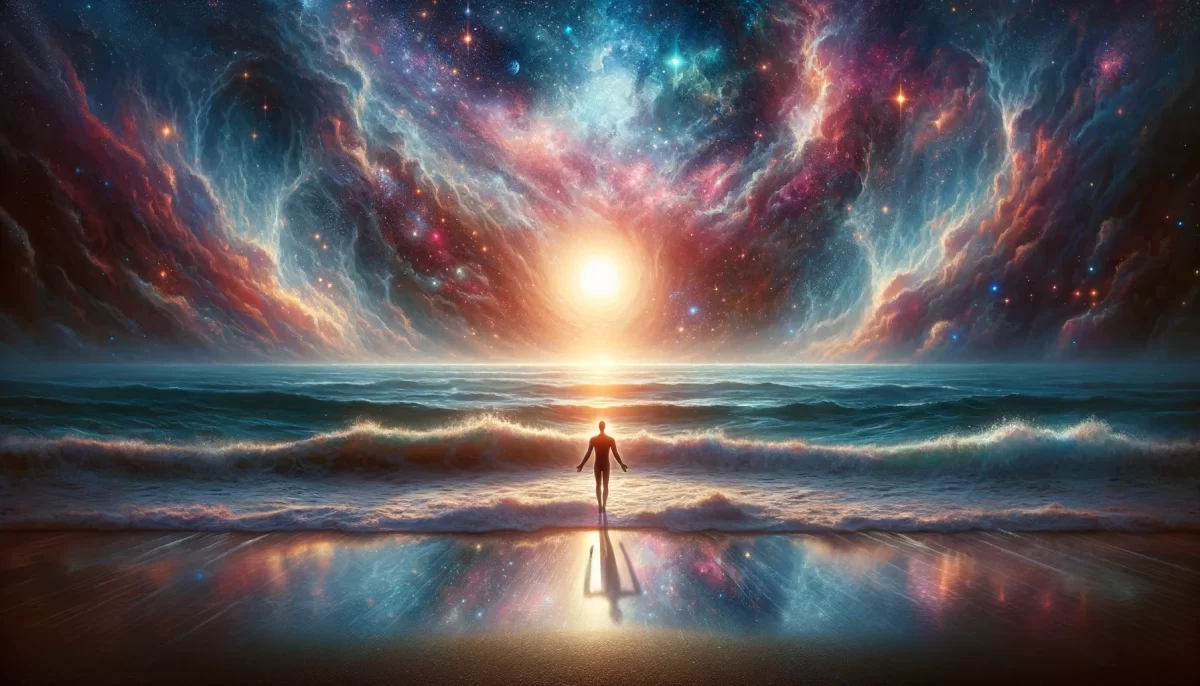
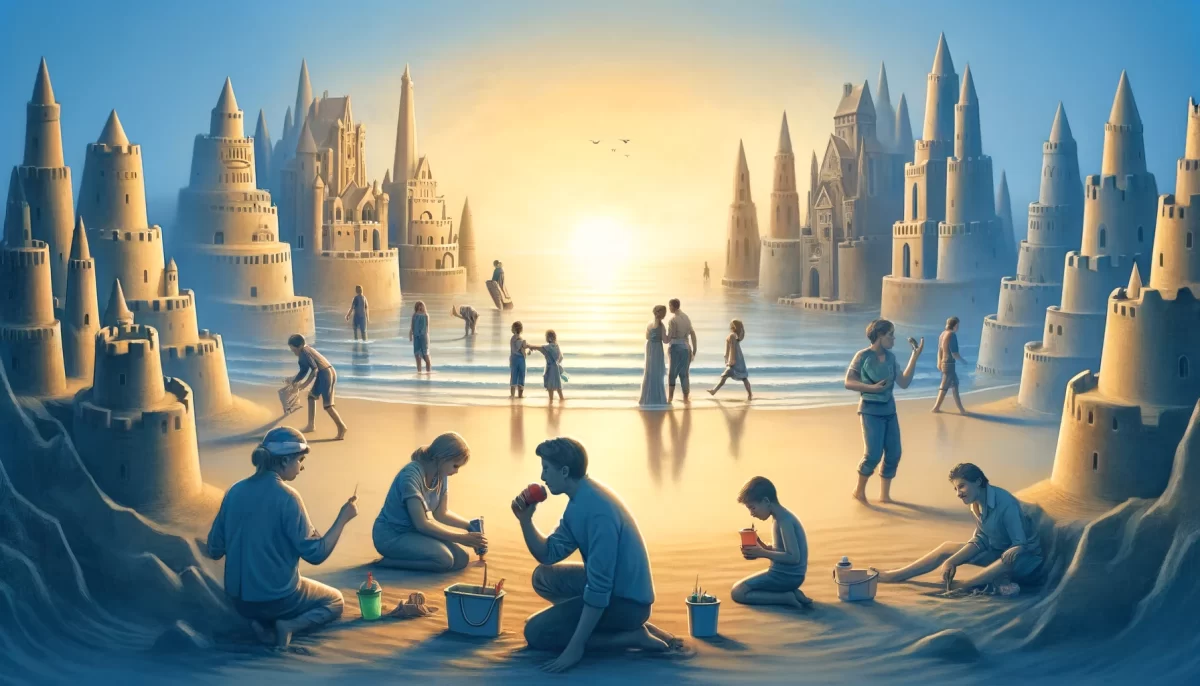

Leave a Reply